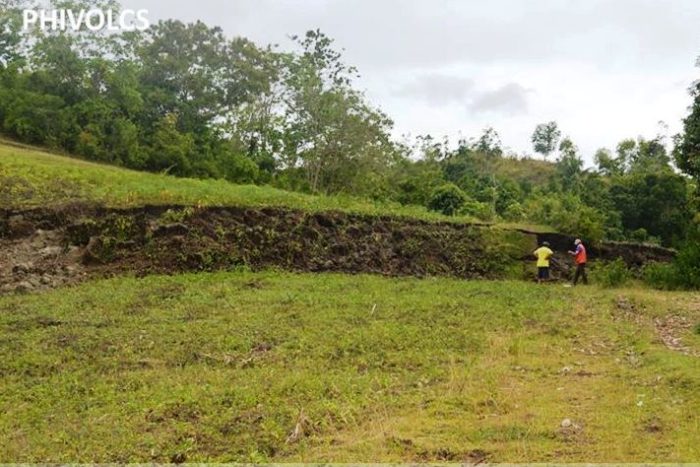It seems that the October 15, 2013, earthquake that killed about 200 people and caused major infrastructure damage in Bohol and Cebu was triggered by a previously unknown fault in western Bohol, Philippines.

Geologists from the Philippine Institute of Volcanology and Seismology (Phivolcs) found “ground zero” or the fault that triggered the devastating magnitude 7.2 earthquake on October 15, 2013 in the Philippines.
Here the report from Inquirer news:
Immediately after the earthquake, Phivolcs said the tremor was caused by the movement of the East Bohol Fault. The epicenter, first reported as Carmen town, was later adjusted to the general area between Sagbayan and Catigbian towns in north central Bohol based on the distribution of aftershocks. Geologists found a 5-kilometer surface rupture that extended from barangay Anonang in Inabanga town to barangay New Anonang in Buenavista town. “That fault motion caused the earthquake,” Renato Solidum, director of Phivolcs told ABS-CBN News Channel’s Talkback yesterday morning. The ground rupture pushed the ground upward from two to three meters, cutting through mountains, roads and possibly settlement areas. Phivolcs teams are still studying the extent of the fault line which could extend 100 kilometers or longer. Meanwhile, aftershocks recorded by Phivolcs indicate a general distribution from north Bohol to the offshores of Dalaguete, Alcoy and Boljoon towns in southern Cebu. The data was plotted on a map by Jessie Alaivar Floren, a private Geographic Informatino System expert in Cebu. Aside from structural damage, residents in southern Cebu towns of Alegria and Badian and Carcar City have complained that ground water turned to “milo” brown. “The earthquake may have disturbed the clay-limestone land formations in these areas, affecting their water table and underground water channels,” said Jun Lucero, senior geologist of the DENR Mines and Geosciences Bureau (MGB).
Liquefaction
Lucero told Cebu Daily News that they are now checking reports of possible liquefaction in several areas in Cebu and Bohol. Severe liquefaction could result in the sinking or submersion of lands, he said. Areas near the river and those reclaimed from the sea are more prone to liquefaction, Lucero said. Structures in reclaimed areas, he said, should have stronger foundations and must use materials that can withstand strong ground shaking and liquefaction. There were reports of suspected liquefaction in the Mandaue City abattoir and city jail; in barangay Cotcot in Liloan town and in barangay Canjulao in Lapu-Lapu City. /with Correspondent Michelle Joy L. Padayhag
Three islands formed during another earthquake in Pakistan.











